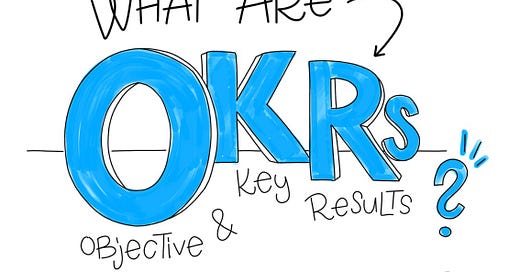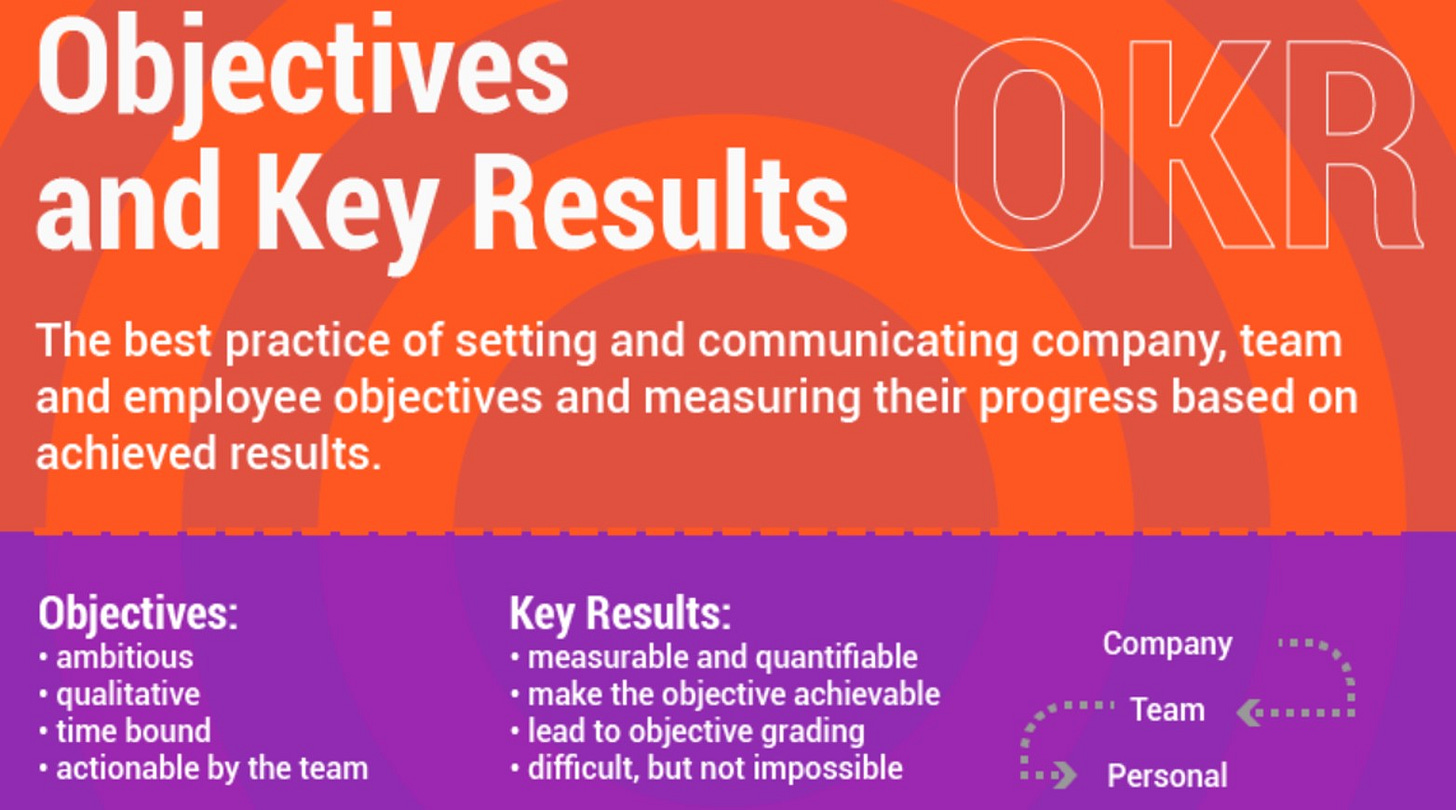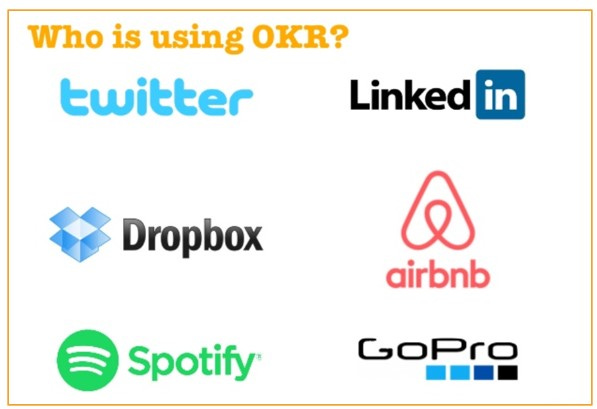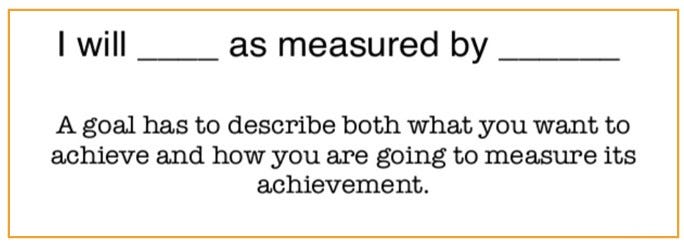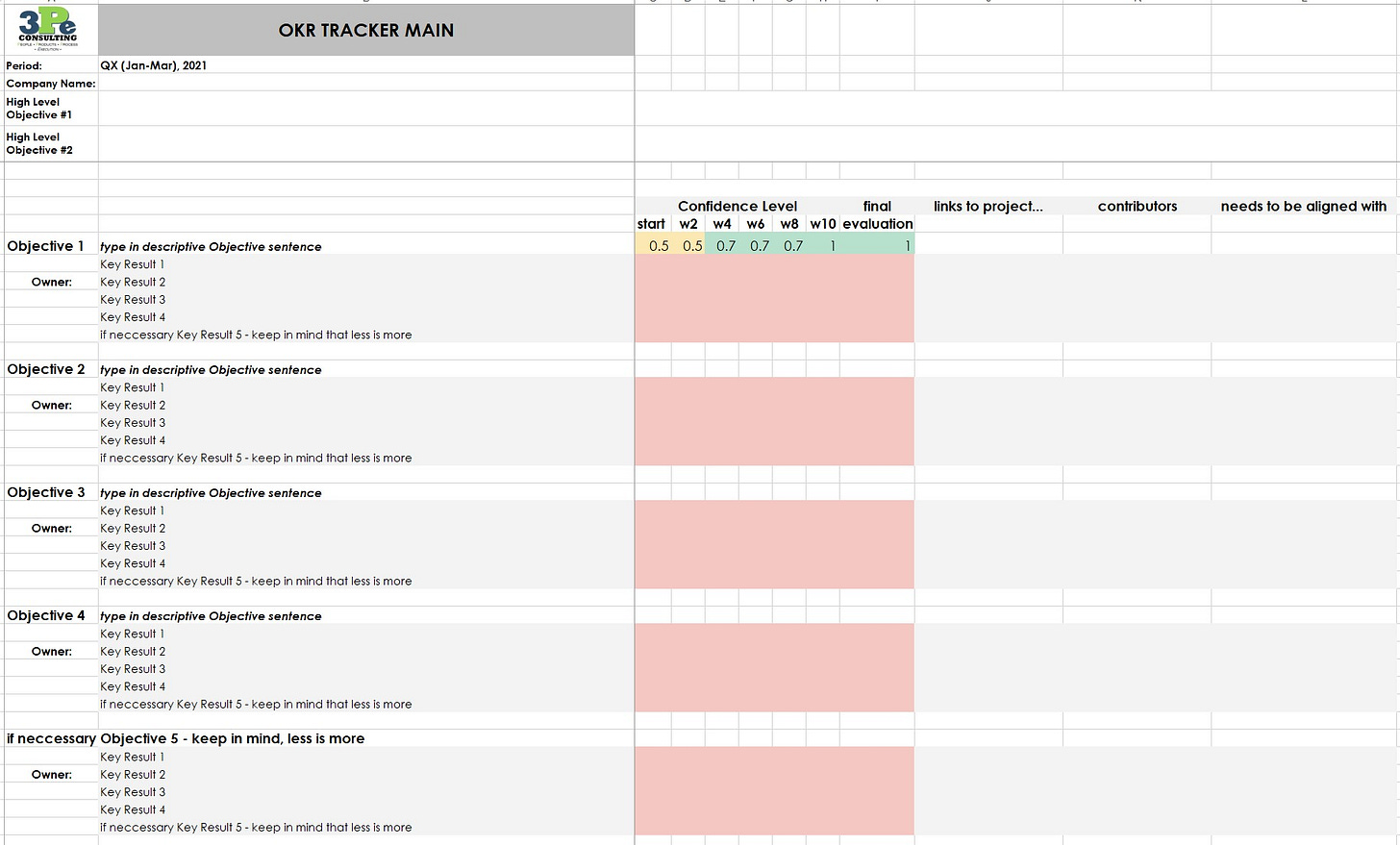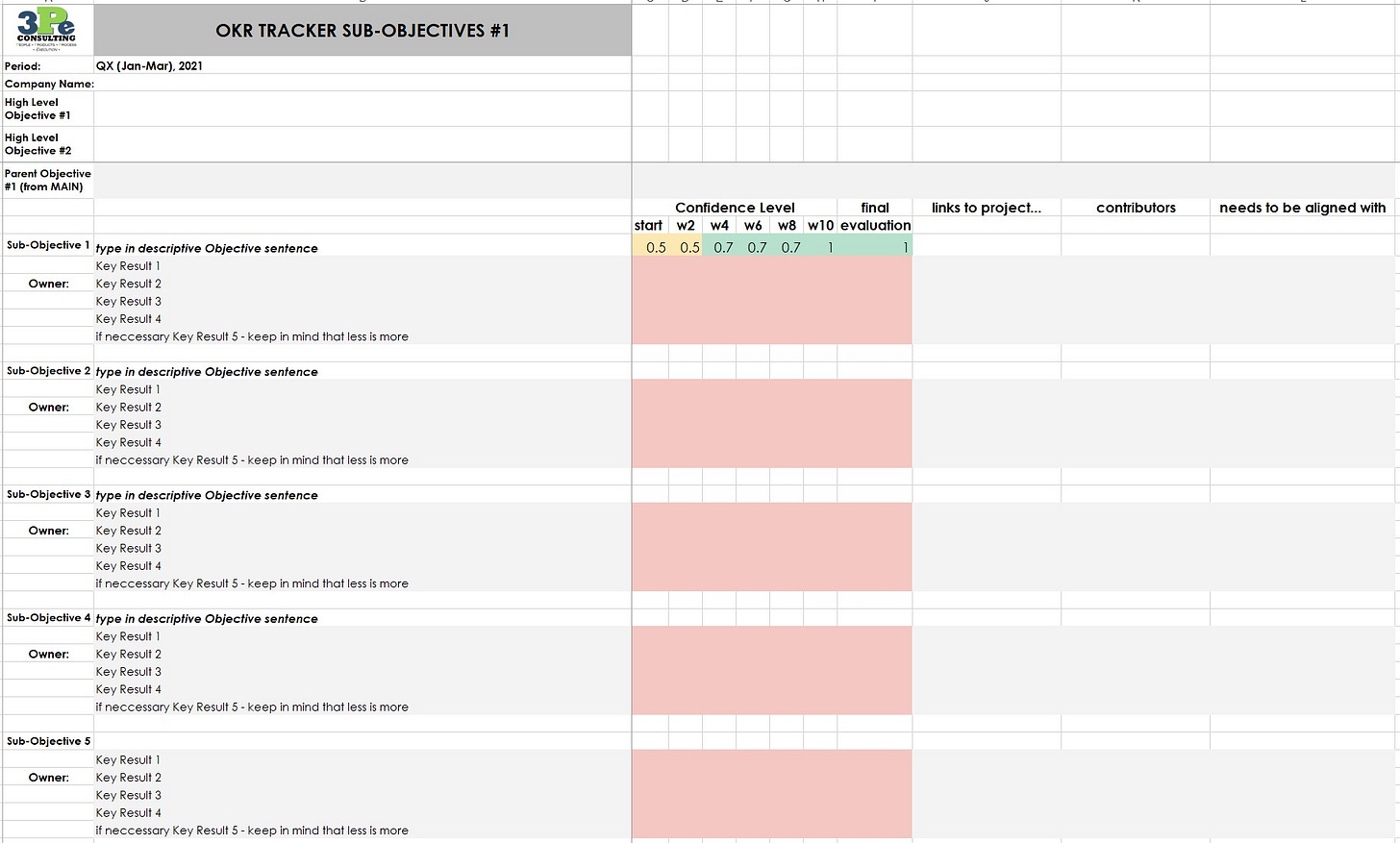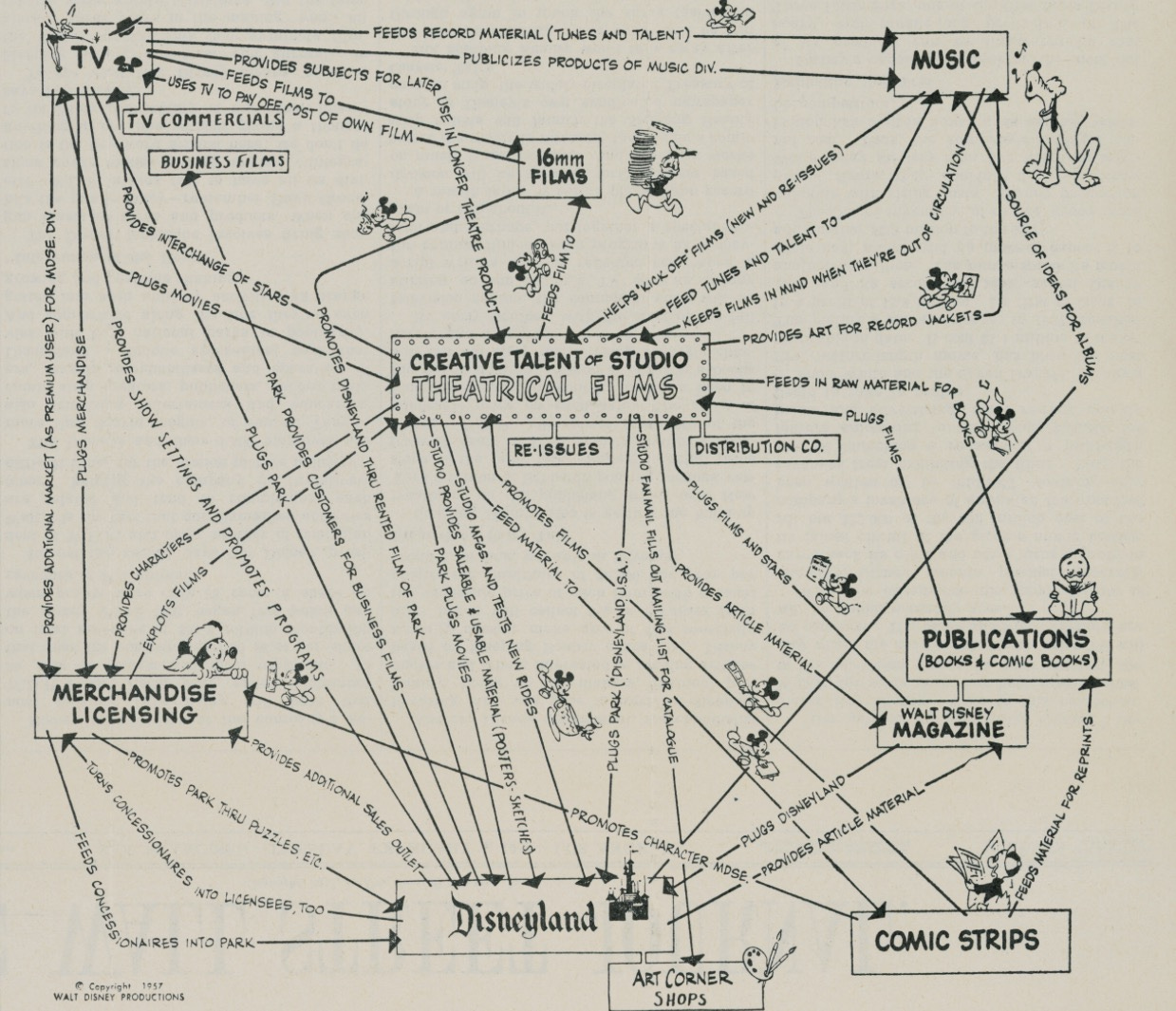I can’t say enough about how supportive all of you have been to All Things Retail. It’s truly appreciated and quite a motivator to keep working hard to add a bit of value to each of your businesses.
If you are a new reader, please join nearly 8,000 retailers and retail service providers who have subscribed to All Things Retail since we launched in April, 2021. Subscribe now (it’s free) and every new issue of the newsletter will go directly to your inbox weekly on Tuesday mornings. A typical issue is about a 7 minute read, a small investment for a big return as you can leverage our easy to implement ideas and advice to help grow your businesses.
What the Heck is an OKR?
Several years ago, I was introduced to OKR’s (Objectives and Key Results) as a process to develop and execute plans and objectives for any business.
I began using OKR’s, slowly at first, within businesses of various sizes. I quickly realized a few things that helped convince me that OKR’s can add tremendous value to any company:
They tie directly to the concept of 80/20, which I first discussed in Issue #2. Basically, the process of creating objectives leads the teams to focus on the 20% of objectives that will generate 80% of the desired results.
They preach that goals must be measurable, which I discussed in detail in Issue #8. This creates unquestionable clarity about the progress being made towards the achievement of each objective as well as the final results.
The process can be adapted somewhat to meet your own leadership style without any negative impact. There are plenty of OKR “experts” out there that preach there is only one way to introduce and manage utilize OKRs. I disagree, as I have tweaked the process to match not only my sensibilities, but also the company that will use them. For example, I tend to use a simpler structure for smaller businesses. Conversely, larger organizations, due to the number of employees, teams and moving parts, perform better with a more robust OKR structure.
The more I used OKR’s, the more I realized that they are a powerful tool (even with my tweaks) for setting 80/20 goals and aligning any organization behind the achievement of those goals. Importantly, OKR’s also provide a means of measuring progress and ultimately results against initial expectations.
So, let’s jump into some details!
What the Heck is an OKR?
OKR is Google’s approach to goal setting. If it’s good for Google…
OKR’s are frequently set, tracked, and re-evaluated – usually quarterly or monthly (start quarterly, it’s more manageable).
OKR is a simple, fast-cadence process that engages each team’s perspective and creativity. This creates a greater sense of ownership in the process and towards the objectives.
Creating alignment in the organization is one of the main OKR benefits. The goal is to ensure everyone is going in the same direction, with clear priorities. Wasted effort on non-priorities is eliminated.
OKR’s original concept came from Intel and spread to other Silicon Valley companies. Google adopted OKR in 1999, during its first year.
Besides Google, other companies using OKR include Spotify, Twitter, LinkedIn, Airbnb, Walmart, Target, The Guardian, Dun and Bradstreet, and ING Bank.
The Benefits of OKRs
Benefits to CEO’s:
Creates goal focused company alignment; align with your leadership team on top priorities and highest leverage activities each quarter.
Fits objectives into the company vision, mission, and values to motivate your company with purpose.
Provides visibility into company, department and individual progress, wins, and roadblocked areas.
Benefits to Managers:
Keeps your team focused, inspired, and aligned by providing context and direction and setting top priorities each quarter.
Increases growth mindset, focus on progress over results (if progress occurs on schedule the results will come), and uses goal setting and achievement as learning opportunities.
Improves manager feedback through objective focused management.
Benefits to the Team:
Feel more purpose by aligning individual goals to company goals to see how individual work drives company goals forward.
Visibility into company priorities, updates, and changes that impact individual work.
Identifies skills gaps and create learning goals to keep growth and development front and center.
So, this is all well and good, but how do I create and enact an OKR process? As noted above, you can make this as intricate as you like, but I prefer a basic method to begin. Start with this 6-step process and build upon it if and when you see fit.
The company sets 2-3 measurable leadership goals and objectives for the year and for each quarter.
Each team sets 3-5 measurable team objectives that are aligned with the one's leadership sets for the company.
Employees set 3-5 measurable personal objectives and key results that align with the team and company key objectives.
Employees and managers gain mutual agreement on set OKRs as stretch goals that are not easily achievable and are not tied to yearly performance evaluations.
OKR goals are made transparent throughout the company so that everyone sees the bigger picture and can hold each other accountable.
Employees evaluate their objectives and key results by scoring the percentage of completion throughout each quarter.
Here is an example of how to properly construct a goal / objective:
Objectives cascade down beginning at the company level. Once defined, each team creates their own deliverables that will support the company-level objectives. Finally, each team member will develop deliverables that support their team’s objectives. Once you get the hang of it, its an elegantly simple, logical, and effective process. Here is an example with specific deliverables:
Ongoing tracking of progress is an important part of the OKR effort. I use the forms below to measure progress. The top form (“main”) is for the company objectives. The second form is for team objectives. Every team uses a separate form. Finally, use a third form (same layout) for each individual on each team. So, tracking occurs at the company, team and individual level. In this example, I track “Confidence Level” of achievement of each goal on a scale of 1-10 over a 10 week period. On the “Main” (company-level) tracker, each “owner” of an objective is a team. On the “team” tracker (“sub-objectives”), each “owner” is an individual on that team. Measure progress weekly and you will be pleasantly surprised with the progress that will occur.
The OKR process is a bit challenging to communicate in a short newsletter. That said, the 6-step process above will get you off to a great start. If you get going and need further input as to how to use the OKR process effectively, reach out to me anytime.

